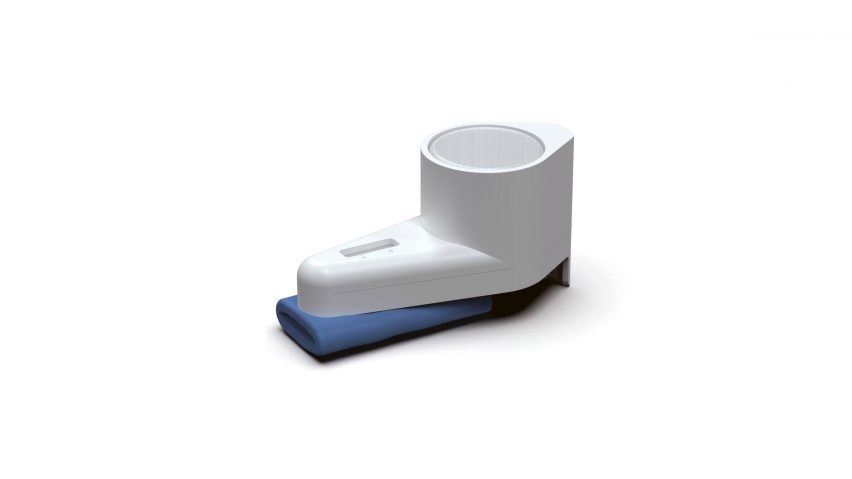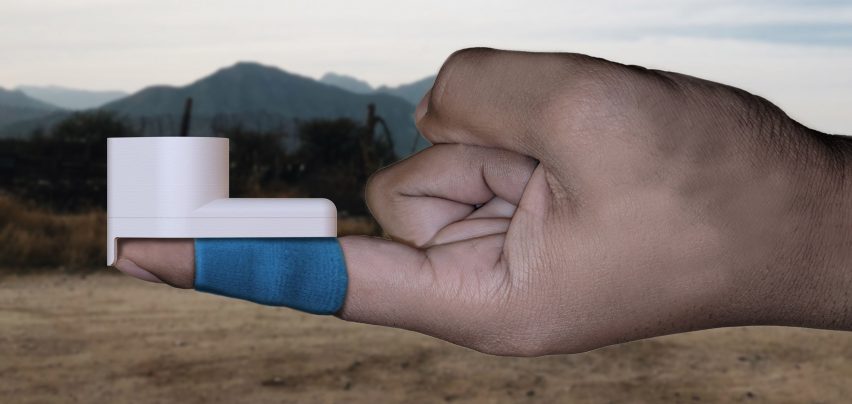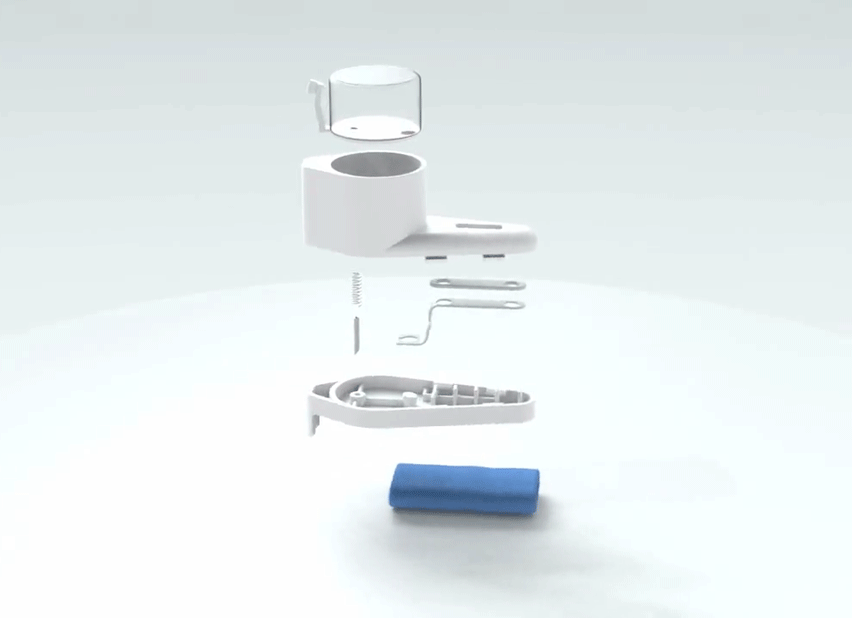Catch device lets users in developing countries test themselves for HIV at home
British product designer Hans Ramzan has created a pocket-sized device that enables people to test themselves for HIV from the comfort of their own home.
The self-testing mechanism, called Catch, was designed to be low cost and easy to use in order to encourage people in developing countries with limited access to healthcare to check themselves at home.

According to Ramzan, HIV is the leading cause of death in over 90 per cent of developing countries, with more than 2.5 million individuals contracting the virus every year.
The virus often goes unnoticed until it develops into AIDS – the final stage of HIV. Ramzan has therefore come up with an economical device that allows easy blood extraction for individuals who wish to check if they have HIV.
Costing just £4 to produce, the product is injection moulded from recycled plastic – a composite of recycled polyethylene terephthalate (PET) water bottles and regular PET, and can be easily mass produced.

Designed to "do all the thinking for the user", the device is operated in three simple steps. First the user slides the tight sleeve, which is lined with disinfectant, over their finger.
They then push down on a pipette on the top of the device, which is linked to a needle. This pierces the skin and plunges the needle into the finger. When the pipette is released, air is displaced, allowing blood to be sucked up into the device.
By pressing the latch button on the side of the device, the needle is released from the finger and the blood falls onto an absorbent strip.
The indicator detects antibodies in the blood, showing the results in a similar manner to a pregnancy test – one line indicates that the test is working. If HIV antibodies are present, a second line will appear.
Ramzan's guiding principle was to combat the issue of late detection of the disease. "Two million people die from AIDS each year," he said. "This begs the question, why is HIV not detected before it reaches the AIDS stage?"
"If HIV is caught early, it is treatable. As a result, the death toll in developing countries will be considerably lower. This is where Catch can help," he continued.
Ramzan wanted to create something that would stop developing countries having to rely on western donations for healthcare aid, and so set out to design a product that was designed specifically for their needs.
"The world we now live in often sweeps major issues such as AIDS under the carpet. It is only until it affects 'first world' countries that we begin to take action," he said.

While the product has not yet been manufactured on a large scale, Ramzan hopes to take his product into production as soon as possible.
In a similar project back in November 2017, a group of Canadian engineering students won the James Dyson Award for their Skan device that is able to detect skin cancer without the need for a biopsy.